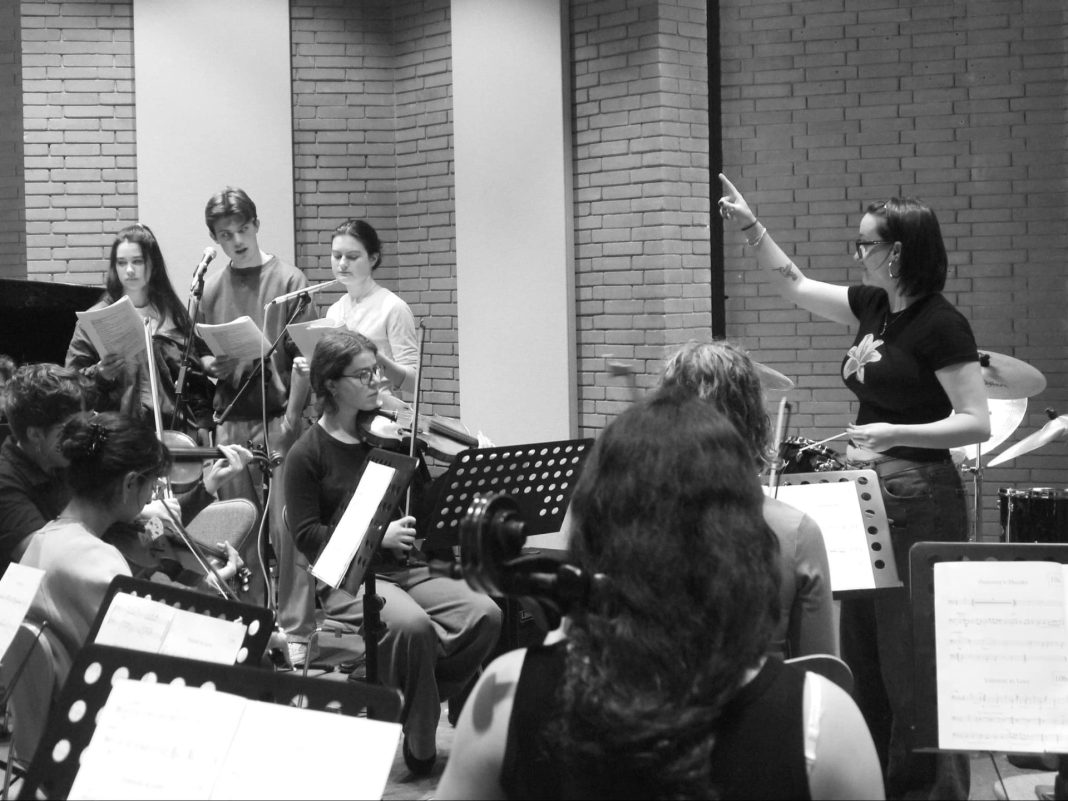If you were looking for a single emblem of Clarendon Production’s mammoth staging of Les Liaisons Dangereuses at the Oxford Playhouse, you wouldn’t be hard-pressed for impressive options. Maybe it would be the palmful of butter beans in the orchestra pit, gently sifted to imitate the sound of rainfall. It might be the several onstage (and offstage) cameras, manually operated, live-projecting otherwise hidden moments of the performance. Or perhaps it would be the 60 plus members of cast and crew, who have worked intensely over the space of just a few months to construct the show from the ground up.
In short, there is nothing ‘low-key’ about this production.
Christopher Hampton’s Olivier award-winning play, based on the 1782 epistolary novel of the same name, is a tale of deceit and seduction amongst the upper echelons of 18th-century French society. Letters and secret communications take centre stage: at one point a character’s lower back is used, naturally, as a writing desk. In this new student rendition, however, the play’s themes of perspective and specularity will be amplified by the use of live cinema.
Liaisons represents, for Clarendon Productions, a natural progression from their previous production of Amadeus – also set in 18th century Europe. Director and Clarendon co-founder, Lucas Angeli, states the incorporation of cinema emerged organically from the content of the play itself – what he calls ‘the ultimate play of surfaces’. The cameras will capture and broadcast actors’ expressions and movements in detail usually impossible with ordinary theatre, allowing the audience to close in on the most intimate and tense moments of the show. But it is no small feat. Beyond the people operating the cameras, there will also be a team behind a switchboard performing live edits, deciding in real-time which camera will be streaming and when. On this point, the company had input from celebrated theatre director, Katie Mitchell OBE (alumni and Honorary Fellow of Magdalen College), one of the pioneers of this form of live cinema. The show has also been produced in collaboration with the Oxford Playhouse itself, a partnership that Sonya Luchanskaya, Coordinating Film Lead, stated was a ‘massive gift…we’ve been able to work with people who really really know what they’re doing’.
Through the tension between the realism of this onstage film and the layers of artificiality created within the theatre itself, the team hope to capture a ‘postmodern’ approach to 18th century drama. Costumes and set design will ‘gesture towards’ period without being beholden to it (going ‘full period’ is also, notes Angeli, ‘bloody expensive’).
It is a production that, through every possible outlet, pushes the envelope of student theatre. The entire performance will be accompanied by an original score composed and conducted by Musical Director, Lou Newton. It is the first time the orchestra pit of the Playhouse has ever been used for a student production. The music was written completely from scratch over the course of the summer, and is timed down to the second to ensure that it matches up with the actors’ dialogue (the speed of which, of course, changes with every performance). The music is so closely bound with the drama that it’s now almost impossible to imagine how the play is ever performed without it. With over 26 orchestral musicians and a percussion section that includes, amongst other things, sandpaper, cellophane, and the aforementioned ‘rain beans’, it is an incredibly impressive set up. This blending of foley (sound effects usually added in post-production) into the live score aims to, as Newton states, ‘gradually challenge the audience’s ears…I wanted it to feel like there was a boom mic over the scene’. Though it would have been simple enough to find a decent audio file of, for example, rain or crackling fire, ‘short-cut’, it would appear, is a term that this team has never heard of. ‘The show just requires’, jokes Angeli, ‘a real commitment to the bit’.
Now, just a few days out from opening night, all of the play’s many moving parts – cast, film team, orchestra, crew – have begun to slot into place. It will undoubtedly be one of the most all-out, technically spectacular shows that Oxford student drama has seen in a long time. So, is there anything the production team would like an audience to know in advance?
Angeli is keen not to kill the mystery: ‘I don’t love the idea of the audience knowing all our tricks’. In a leaf out of protagonist Valmont’s playbook, apparently some dramatic scheming is best left under-wraps.
But, then again, the story of Liaisons teaches us not to trust the middle-man (or any man – or woman – for that matter). Who can know what’s real in a play so doused in secrecy?
The public’s only option, then, is to experience the drama for themselves.
Les Liaisons Dangereuses will run from 7-9 November at The Main Stage, Oxford Playhouse.


